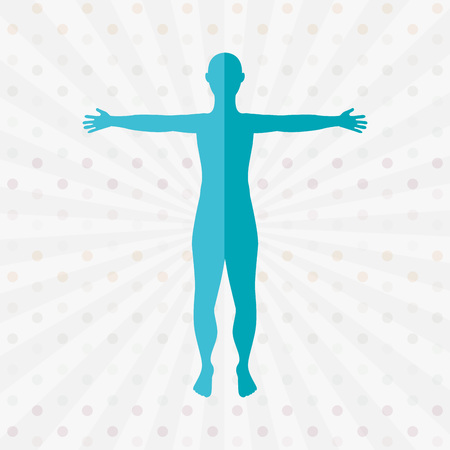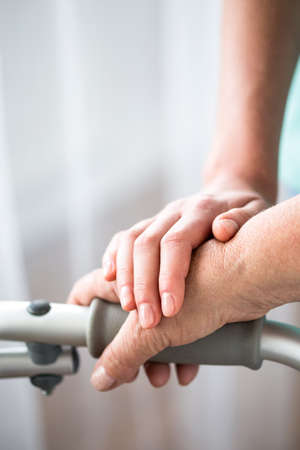Introduction: Setting the Scene for Neurological Rehabilitation in the UK
The journey for neurological patients within the United Kingdom is a complex and multifaceted process, shaped by the structure and ethos of the National Health Service (NHS). For individuals affected by conditions such as stroke, traumatic brain injury, multiple sclerosis, or Parkinson’s disease, their pathway from acute care to community-based rehabilitation is both challenging and highly individualised. Upon initial diagnosis or following a sudden neurological event, patients typically enter the NHS system through acute hospital services. Here, rapid assessment and medical stabilisation are prioritised to address immediate health risks. However, the story does not end with discharge from acute care—rather, it marks the beginning of a longer-term rehabilitation journey that extends into local communities. This continuum of care is central to improving quality of life and maximising functional independence for neurological patients across the UK. In this context, understanding each phase of the pathway—from specialist hospital units through to multidisciplinary community teams—provides valuable insight into how rehabilitation is delivered and coordinated within the British healthcare landscape.
2. Transitioning from Hospital to Community: Coordination and Continuity of Care
The transition from acute hospital care to community rehabilitation is a critical stage for neurological patients in the UK, demanding effective coordination and seamless continuity of care. This process involves a structured handover between acute hospitals and community-based rehabilitation teams, ensuring that patients receive ongoing support tailored to their evolving needs.
Multidisciplinary Handover Processes
Effective handover relies on a multidisciplinary approach involving neurologists, nurses, physiotherapists, occupational therapists, speech and language therapists, and social workers. In the UK, it is common practice for these professionals to participate in joint discharge planning meetings before the patient leaves hospital. These meetings aim to assess the patient’s medical status, functional abilities, social circumstances, and rehabilitation goals. Comprehensive documentation—including clinical summaries, therapy notes, medication lists, and risk assessments—is shared securely with the receiving community team.
Typical Handover Components
| Component | Description |
|---|---|
| Discharge Summary | Medical history, diagnosis, recent interventions, and current health status |
| Therapy Reports | Assessment of physical, cognitive, and communication abilities with recommendations for ongoing therapy |
| Medication Management | List of prescribed medications and guidance for community pharmacy or GP follow-up |
| Risk Assessment | Identification of falls risk, pressure sores, mental health concerns, or safeguarding issues |
| Social Care Plan | Details of home adaptations required or referrals to social services for support packages |
Collaboration Between Acute and Community Teams
In most NHS trusts across the UK, liaison roles such as discharge coordinators or specialist nurses facilitate smooth communication between hospital and community settings. Community rehabilitation teams typically receive referrals electronically via secure platforms like SystmOne or EMIS Web. Early involvement of community practitioners during inpatient care—often through “in-reach” visits—helps build rapport with patients and ensures continuity once they return home.
Common Practices Supporting Continuity of Care
- Regular multi-agency meetings to review progress post-discharge and adjust care plans accordingly
- Shared access to electronic health records among authorised professionals involved in the patient’s pathway
- Use of standardised assessment tools (e.g., Barthel Index or Modified Rankin Scale) to monitor rehabilitation outcomes consistently across settings
- Close collaboration with primary care (GPs) to manage comorbidities and prevent readmissions
- Engagement with voluntary sector organisations such as Headway or The Stroke Association for additional peer support and resources
Cultural Considerations in UK Practice
The ethos of patient-centred care underpins all stages of transition within the NHS. Patients and their families are actively involved in decision-making throughout the process. There is also a strong emphasis on equality of access to services regardless of postcode—a principle reinforced by national guidelines from bodies like NICE (National Institute for Health and Care Excellence). By fostering open communication and integrated working practices, UK healthcare systems strive to minimise gaps in care during this vital transition phase.

3. Community Rehabilitation Services: Structure and Access
Community rehabilitation services play a pivotal role in the continuum of care for neurological patients in the UK, bridging the gap between acute hospital discharge and long-term independence. These services are varied and tailored to meet both the medical and social needs of individuals recovering from neurological events such as stroke, traumatic brain injury, or progressive neurological conditions.
Types of Community Rehabilitation Services
The UK offers a range of community-based rehabilitation options, including multidisciplinary teams (MDTs) that typically comprise physiotherapists, occupational therapists, speech and language therapists, clinical psychologists, and specialist nurses. Some areas provide specialist neuro-rehabilitation teams focusing exclusively on complex neurological cases, while others rely on more general community therapy teams with experience in neurological rehabilitation. In addition to NHS provision, voluntary sector organisations—such as Headway, the Stroke Association, and local charities—often offer supplementary support groups, counselling, and peer-led activities.
Referral Mechanisms
Access to community rehabilitation is usually initiated by hospital-based clinicians at the point of discharge. Referrals can also originate from GPs, social workers, or self-referral in some regions. A formal assessment is conducted to determine eligibility and prioritise need based on clinical presentation and personal goals. Care coordinators or case managers are frequently involved in navigating referrals, ensuring continuity of care across settings.
Regional Variations in Provision
There are significant regional variations in the structure and availability of community rehabilitation services across England, Scotland, Wales, and Northern Ireland. Urban areas tend to have greater access to specialist teams and more diverse service offerings compared to rural or remote regions, where provision may be limited by workforce shortages or geographical constraints. The “postcode lottery” effect means that patient experiences and outcomes can vary considerably depending on location. Ongoing efforts by NHS England and devolved health bodies seek to address these inequities through strategic commissioning and targeted investment in under-served areas.
Challenges and Opportunities
While the UK continues to prioritise integrated care pathways for neurological patients, challenges remain in terms of timely access, consistent quality standards, and seamless communication between acute and community teams. Digital innovations such as remote monitoring and tele-rehabilitation are being piloted to extend reach and improve efficiency. Ultimately, strengthening community rehabilitation infrastructure is essential for optimising recovery trajectories and supporting people with neurological conditions to live well within their communities.
4. Patient and Family Experiences: Living Beyond Discharge
Transitioning from acute care to community rehabilitation marks a significant milestone for UK neurological patients and their families. While discharge from hospital may bring relief, it also introduces new uncertainties and challenges as individuals adapt to daily life in their local communities. This stage of the journey is deeply personal, influenced by regional resources, individual circumstances, and the evolving nature of neurological recovery.
Adapting to Life at Home
For many, the return home is both anticipated and daunting. Patients often face physical limitations, cognitive changes, or emotional fluctuations that impact their independence and relationships. Families must quickly learn to support loved ones while managing their own anxieties and practical concerns. The availability and quality of community services can vary widely across the UK, affecting how smoothly this transition unfolds.
Common Challenges Encountered Post-Discharge
| Challenge | Patient Perspective | Family Perspective |
|---|---|---|
| Accessing Community Services | Difficulties with referrals or waiting lists for therapy | Navigating complex systems; advocating for support |
| Physical Adjustments | Managing mobility aids, fatigue, pain | Adapting the home environment; learning new routines |
| Mental Health & Wellbeing | Anxiety about progress; feelings of isolation | Coping with uncertainty; finding peer support |
| Financial Concerns | Pension or benefits applications; employment uncertainty | Balancing work commitments; accessing financial advice |
The Role of Local Support Networks
The lived experience of recovery is profoundly shaped by the presence (or absence) of local support networks. Charities such as Headway or the Stroke Association often bridge gaps in statutory services, offering peer groups, helplines, and activity sessions. Some patients benefit from close-knit neighbourhoods or proactive social prescribers who connect them to community assets. Others may feel isolated if services are fragmented or hard to access—an issue more pronounced in rural areas.
A Voice from the Community: Patient Reflections
“After leaving hospital, I realised how much Id taken little things for granted. The physio visits were helpful but sometimes felt too short. What made a real difference was meeting others at the local support group who understood what I was going through.” — Janet, stroke survivor, Manchester.
Empowering Patients and Families Moving Forward
Navigating the path beyond discharge requires resilience, adaptability, and ongoing advocacy. Those who thrive often do so thanks to clear communication with health professionals, accessible information on entitlements, and emotional support from peers or voluntary organisations. As NHS England continues efforts to standardise post-acute pathways and promote integrated care systems, there remains a collective responsibility to amplify patient voices and close gaps in community provision.
5. Challenges and Barriers in the UK Context
The transition from acute care to community rehabilitation for neurological patients in the UK is fraught with a range of systemic challenges that can hinder effective recovery. Understanding these barriers is essential for clinicians, patients, and policymakers striving to improve outcomes across the country.
Funding Constraints: An Ongoing Struggle
One of the most prominent issues within the UK healthcare system is the persistent limitation of funding allocated to neurological rehabilitation services. While acute care often receives immediate financial prioritisation due to its life-saving nature, community rehabilitation frequently faces budgetary constraints. This results in limited staff availability, reduced access to specialist equipment, and fewer therapy sessions for patients once they leave hospital settings.
Impact on Service Delivery
When resources are stretched thin, multidisciplinary teams may be forced to ration services, leading to shorter intervention periods and less personalised care plans. For many patients, especially those with complex needs following stroke or traumatic brain injury, this can mean missing the critical window for optimal neuroplastic recovery.
Waiting Times: Delays at a Critical Juncture
Another significant barrier is the length of waiting times between discharge from acute care and entry into community-based rehabilitation programmes. In some regions, these delays can stretch from weeks to months, during which patients may experience deterioration or develop secondary complications due to inactivity or lack of support. For families and carers, this wait can be both stressful and disempowering.
The Risk of Lost Progress
Timely intervention is vital for neurological recovery. Any delay risks undoing gains made during acute hospital care and may negatively affect long-term outcomes for mobility, independence, and quality of life.
Regional Inequities: A Postcode Lottery?
Access to high-quality community rehabilitation varies markedly depending on geographical location within the UK—a phenomenon sometimes referred to as the “postcode lottery.” Urban centres may offer more comprehensive services with better staffing levels and facilities, while rural or under-resourced areas struggle to provide even basic follow-up care. This inequity leads to disparate patient experiences and outcomes based not on clinical need but on where a person lives.
Addressing Systemic Disparities
Tackling these regional differences requires coordinated national strategies, data-driven resource allocation, and ongoing investment in workforce development across all four nations of the UK.
In summary, overcoming funding limitations, reducing waiting times, and addressing regional disparities are crucial steps in ensuring that every neurological patient in the UK receives effective community rehabilitation following acute care. These systemic barriers demand practical solutions backed by strong leadership and a commitment to equitable healthcare for all.
6. Innovations and Future Directions in Community Rehabilitation
The landscape of community-based neurological rehabilitation in the UK is rapidly evolving, fuelled by a commitment to improving patient outcomes and integrating care across sectors. Recent years have witnessed a surge in innovative approaches, pilot projects, and policy initiatives designed to bridge the gaps between acute care and long-term community support for individuals with neurological conditions.
Embracing Digital Health and Tele-Rehabilitation
One of the most significant advancements has been the adoption of digital health technologies. Tele-rehabilitation platforms now enable patients to access specialist input remotely, overcoming geographical barriers and reducing waiting times. NHS pilot schemes, such as virtual multidisciplinary team meetings and home-based therapy via video calls, have demonstrated promising results in maintaining continuity of care while empowering patients to manage their rehabilitation more independently.
Integrated Care Pathways and Local Partnerships
The UK has also seen a shift towards integrated care pathways that foster closer collaboration between hospitals, GPs, community therapists, and voluntary organisations. Initiatives like the NHS Long Term Plan emphasise personalised care planning and social prescribing, ensuring that neurological patients receive holistic support tailored to their unique needs within their own communities. Regional partnerships are piloting shared electronic records and single-point referral systems to streamline transitions from acute to community services.
Policy Shifts Driving Innovation
Recent policy developments reflect a national drive to prioritise rehabilitation as an essential component of health and social care. The National Neuro Advisory Group (NNAG) continues to advocate for increased investment in community neuro-rehabilitation teams, workforce development, and equitable service provision across the country. Furthermore, pilot projects funded by NHS England and local Clinical Commissioning Groups are exploring novel models such as rapid response rehabilitation teams and peer-led support programmes.
Looking Ahead: Challenges and Opportunities
While these innovations mark significant progress, challenges remain. Variability in service availability persists regionally, and there is an ongoing need for robust outcome measurement tools to demonstrate impact. Nevertheless, the future direction is clear: a focus on personalised, technology-enabled, community-centred rehabilitation that empowers neurological patients to rebuild their lives closer to home. Continued collaboration between policymakers, clinicians, patients, and carers will be crucial in shaping a more responsive and inclusive system for years to come.


